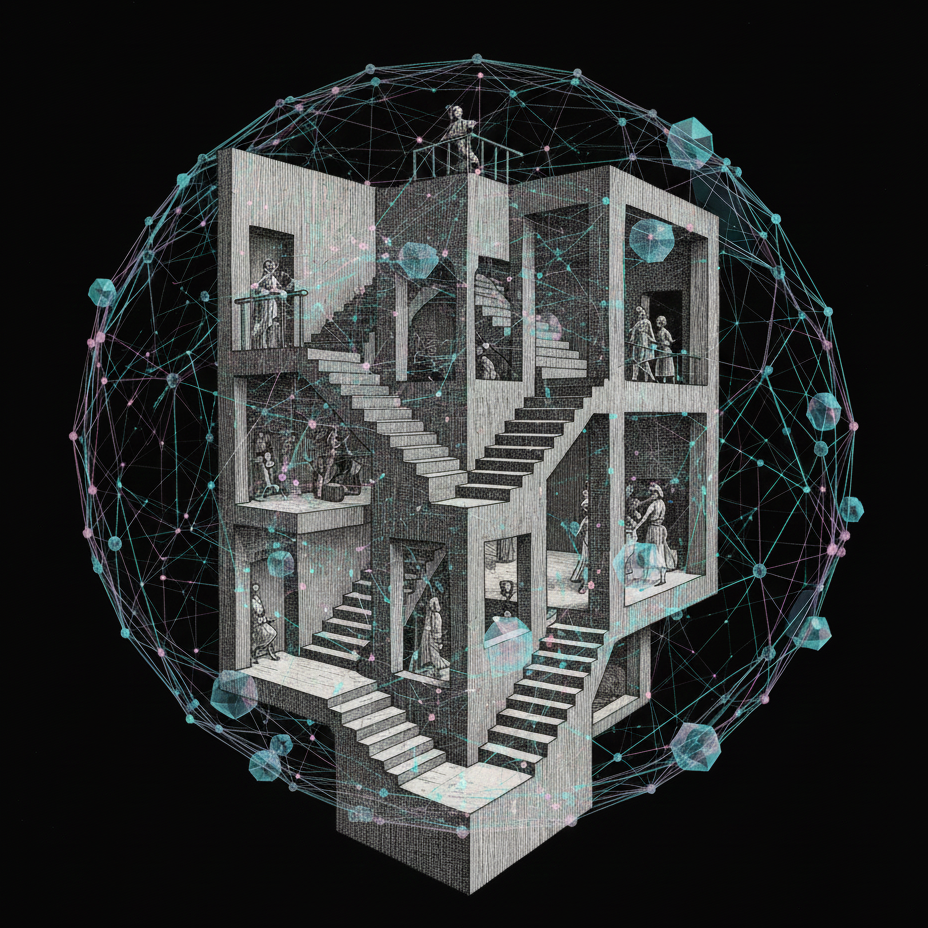Insights
Explore our latest thought leadership, research, and analysis across industries and capabilities.

The Governance Gap: Why Classical Audits Fail on Foundation Models
The governance of artificial intelligence is currently facing an epistemological crisis. The core issue is a "category error": regulators are attempting to govern Foundation Models (FMs) using frameworks designed for a fundamentally different class of technology.
Read More
Imagining the Future of AI Governance: Why Database Principles are the Bedrock of Trust
The high-level conversation about AI governance—focusing on fairness, transparency, and accountability—frequently overlooks the foundational layer upon which all trustworthy AI is built: the data architecture.
Read More
Imagining the Future of AI Governance: From Static Checklists to Dynamic Code
Static governance is like trying to navigate a supersonic jet with a nautical chart—the tools are completely unsuited for the environment.This mismatch creates "governance debt."
Read More
Imagining the Future of AI Governance: A Strategic Blueprint for High-Risk GPAI
The unprecedented adoption of General Purpose AI (GPAI) like ChatGPT—used by roughly 10% of the world's adult population weekly—is fundamentally changing where and how AI risk manifests.
Read More
Imagining the Future of AI Governance: An Engineer's Guide to the EU AI Act
The Act collapses the distinction between building a high-performing AI system and building a compliant one—they are now one and the same.
Read More
Stripe's Foundation Model (3/3): What does it mean for Data Scientists in Finance?
This article concludes that for practitioners, the PFM serves as both a blueprint for the future of domain-specific foundation models and a cautionary case study on the paramount importance of building compliance, fairness, and transparency into the core of next-generation AI systems.
Read More
Stripe's Foundation Model (2/3): The Responsible AI and Regulatory Gauntlet
FPM, as a system used for fraud detection and credit-related decisions, unequivocally qualifies as a "high-risk AI system" under the EU AI Act, triggering a cascade of requirements for risk management, data governance, human oversight, and conformity assessment.
Read More
Stripe's Foundation Model (1/3): A New Architecture for Financial AI
The analysis reveals that the PFM represents a fundamental architectural and strategic paradigm shift, moving away from a collection of siloed, task-specific machine learning models toward a single, general-purpose transformer-based model.
Read More
A Guide to Responsible Regularization in AI
Choosing a regularization technique like Ridge (L2) or Lasso (L1) is more than just a step to prevent a model from overfitting. For AI systems used in high-stakes domains (like finance or hiring), this choice has profound ethical and legal consequences.
Read More
A Guide to Data Aggregation and Privacy in AI/ML
At the heart of AI revolution lies data aggregation: the practice of combining information from numerous disparate sources to create the rich, comprehensive datasets that power sophisticated algorithms. How do we preserve privacy while aggregating?
Read More
A Guide to Differential Privacy for Data Scientists and AI Engineers
Differential privacy is a mathematical framework for protecting individual privacy while still allowing for useful data analysis. This guide answers key questions about its principles, mechanisms, and real-world applications.
Read More
A Proposal for Justifiable AI Decisions
This report provides a comprehensive analysis of the JADS Framework, an architectural pattern designed to solve the problem of explainability and legitimacy in artificial intelligence (AI) systems.
Read More
AI Explainability: Output vs. Decision
This report will conduct an exhaustive comparative analysis of two competing paradigms that define this conflict. The first, which will be termed Model-Output Explanation, represents the current mainstream approach.
Read More
A Guide to Neuro-Symbolic AI in Financial Regulation
The Knowledge Acquisition Bottleneck (KAB) is the profound and long-standing challenge of translating vast amounts of unstructured human knowledge—found in documents, expert intuition, and procedures—into the structured, formal formats that computers require for logical reasoning.
Read More
Explainable AI: Methods, Implementation, and Frameworks - Part I : Foundations of Explainable AI (XAI)
XAI is a cornerstone of trustworthy AI, essential for building user confidence, ensuring regulatory compliance and accountability, helping developers debug and improve models, and mitigating harmful biases.
Read More
Explainable AI: Methods, Implementation, and Frameworks - Part II: A Comprehensive Taxonomy of XAI Methods
To navigate the diverse landscape of Explainable AI, methods are classified along key dimensions, including whether they are intrinsic ("white-box") or applied post-hoc ("black-box"), model-specific or model-agnostic, and whether they provide global or local explanations.
Read More
The 10^25 FLOPs Tipping Point: Navigating Systemic Risk and Compliance Under the EU AI Act
While much of the EU AI Act focuses on specific high-risk use cases, a distinct and consequential set of rules has been created for a category of technology that underpins the modern AI ecosystem: General-Purpose AI models. Understanding the significance of the regulatory thresholds applied to these models requires a precise grasp of the Act's foundational definitions and its unique conception of "systemic risk."
Read More
A Comprehensive Technical Framework for AI Risk Mitigation and Compliance
This report presents a comprehensive technical framework for mitigating AI risk and ensuring compliance, designed for a technical audience of architects, engineers, and governance leaders. It moves beyond high-level principles to detail the specific governance structures, algorithmic techniques, security controls, and operational practices required to build and maintain trustworthy AI.
Read More
A Technical Review of Novel Mitigation Strategies for Risks in the MIT AI Repository
To provide a structured understanding of this complex landscape, the MIT AI Risk Repository offers a comprehensive, living database that synthesizes over 1600 risks from numerous academic, governmental, and industry frameworks. The objective of this report is to provide an exhaustive technical analysis of novel mitigation strategies corresponding to each of the seven risk domains.
Read More